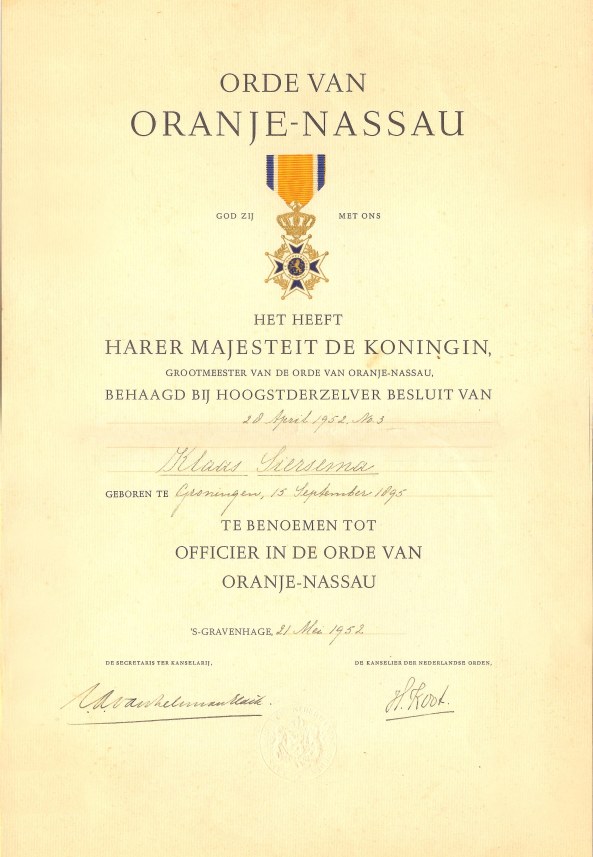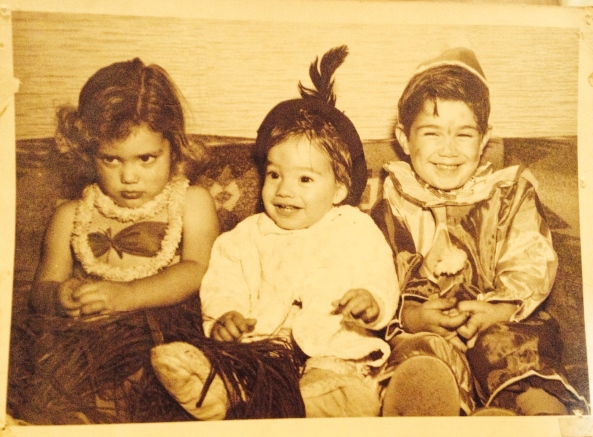I recently got a message from my uncle asking what I might know about Klaas Siersema, my great-grandfather. Well, the truth is I know a lot, I’ve been remiss in writing down all in one place, and I would love to know more. So, here goes. If anyone has additional information about Klaas Siersema, please let me know in the comments!
Thanks for the kick in the pants, Uncle Mike!
Klaas Nicholas Siersema was born on September 15, 1895, in Groningen, Netherlands, to Arentje Vermaas and Gerrit Siersema.
Klaas was the youngest of three siblings. He had two older sisters, Helena Elisabeth “Leentje” Siersema and Elisabeth Helena “Bets” Siersema. Leentje eventually died of starvation during World War II and Bets was rumored to be a medium who could speak to the dead much like her grandfather.
Arentje left Gerrit, who was supposed to be a terrible drunk, taking their children with her when they were still young. She later worked in a shop, but it was likely she went to stay with relatives and did not wholly support herself and her children. It’s possible she stayed with Jacoba Antoinetta van Eijsden in Brielle (I like this theory because in 1909 when Jacoba died, she left half her house and courtyard to Arentje). Jacoba also left Klaas 50 gilders, according to the record Cousin Anje found online.
Klaas would go on to become a career military man. He had joined the Royal Netherlands military by the age of 20, and I believe he was a Vaandrig (officer cadet) when photographed with fellow soldiers in Kampen in 1915.
He was promoted to Tweede-Luitenant (second lieutenant) on September 25, 1917, by the Ministry of War–although this was during WWI, the Netherlands was neutral in the war.
After what was in part a long-distance courtship, Klaas married Helena Frederika de Wit at the Netherlands Reformed Church in Hertogenbosch, where her father was a highly respected member of the congregation. According to their calling cards, Klaas and Helena both lived in Hertogenbosch prior to their nuptials. At 27 years old, Klaas was listed on their wedding certificate as a First Lieutenant of the Infantry. They wed on August 28th, 1923, and he was eight years her senior.
Their first son, Johan Nico “Hans” Siersema, was born in Venlo a little more than a year later on October 9, 1924.
Antony Dirk “Tonny” Siersema, their second son, was born on November 15, 1927.
The death of Tonny on August 1, 1929 precipitated Klaas and Helena’s eventual divorce in that it brought the family doctor deeper into their lives. Helena would go on to have a committed relationship with the doctor for about 50 years.
Klaas remarried to Maria Wilhelmina van Erp, whom he remained married to until his death.
Together, they supported Je Maintiendrai, one of the most prominent underground newspapers in the Netherlands during WWII.
By March, 1938, Klaas had achieved the rank of Kapitein (captain) of 2e Compagnie II Bataljon in the 6e Regiment Infanterie, according to a newspaper clipping. He was photographed with fellow military personnel on July 15 with three stars pinned on either side of his collar.
In 1942, Klaas was captured by the Nazis as a prisoner of war. He was held at Oflag XIII-B, a prisoner of war camp for officers that was at the time in Hammelburg, Germany. There or sometime after, I believe he drew this sketch. He also wrote letters to his wife.
Following his release, his son Hans also escaped from a POW camp. According to one family story, when Hans returned home, Klaas saw the car pull up outside and immediately went into his backyard to hide in the bushes. He thought the Nazis had returned for him, but it was only his son returning home.
Klaas is said to have done important work at the Militair Revalidatie Centrum Aardenburg, where as Director of the institute he helped pioneer new methods of treatment for shell-shock soldiers. According to my step-grandmother, those suffering from what we now call PTSD could live on the grounds with their families, which was unheard of at the time. The hospital does cutting edge medical work to this day. Klaas was succeeded in his position at the MRC by Lcol. Th.A.J. van Erp, according to A.M. “Toon” Blokand.
In 1952, Klaas was named an Officer of the Order of Orange-Nassau, which honors selective individuals for their contributions to society through either civilian or military efforts.
Klaas died of a heart attack while reading “Mein Kampf” at the age of 60 in Doorn on October 14, 1955. I’m not sure if that phrase means he was literally reading it, but that’s how I’ve heard it referenced. My mom still has the book with his bookmark in it.
Click on the photos below to enlarge them.
Click here to see the images Klaas kept in his pocket photo book.
- Photo contributed by A.M. “Toon” Blokand.
- Photo contributed by A.M. “Toon” Blokand.
- Photo contributed by A.M. “Toon” Blokand.
- Photo contributed by A.M. “Toon” Blokand.
- Klaas and Wilhelmina van Erp’s wedding portrait.
- Johan Siersema is seen at bottom right in this family photo.
- Klaas Siersema and fellow Royal Netherlands military members on the 15th of July, 1940.
- Helena de Wit and Klaas Siersema in Oostvoorne, South Holland, Netherlands, in 1922, about a year before they were married.
- Klaas Siersema and Maria Wilhelmina van Erp warm themselves near the stove.


































![Cornelis Kool [1838-1923]. (Courtesy Halbo Kool)](https://digitalkinblog.files.wordpress.com/2014/12/koolmyst-1.jpg?w=593)